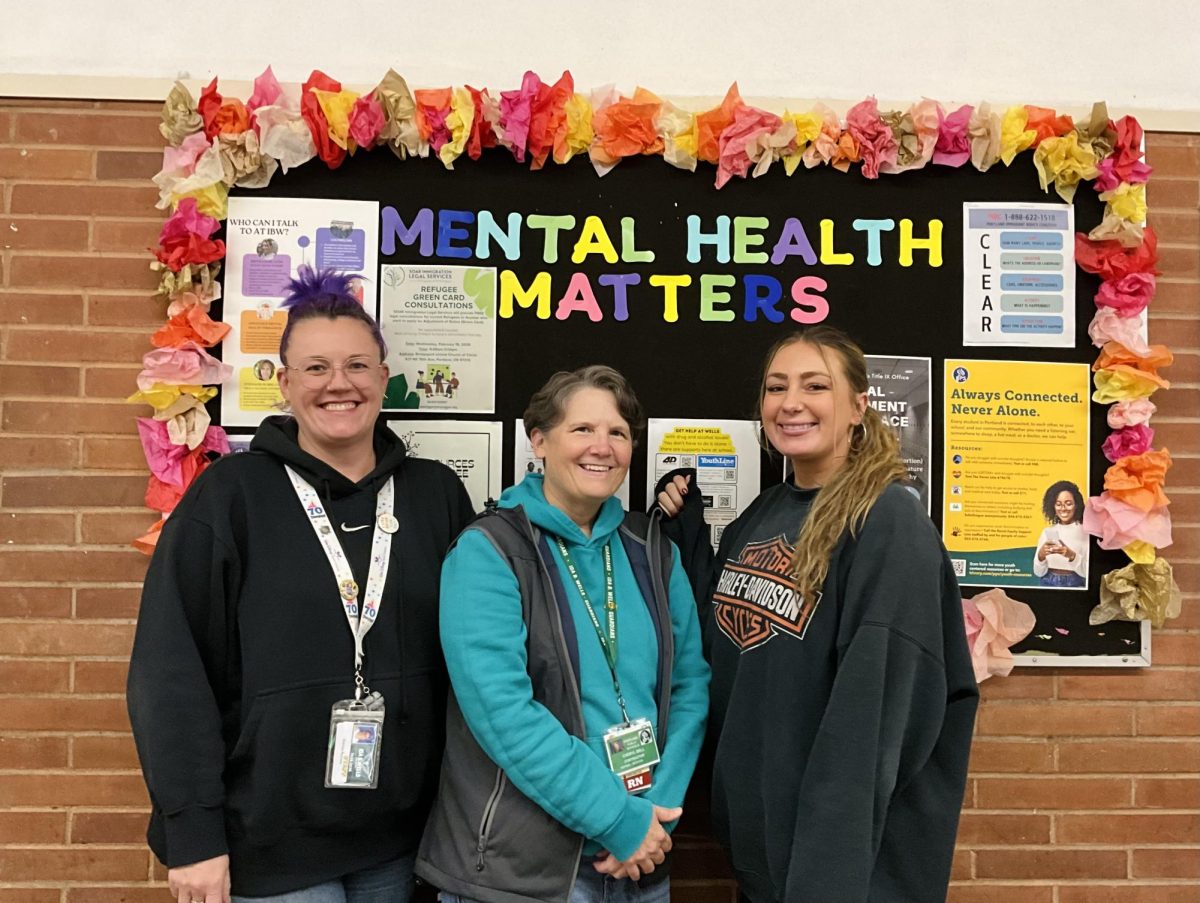Throughout history, there has been a struggle between human rights and legislation. When a select group of nine people is allowed to make decisions for a whole country, problems tend to arise. Looking back at Supreme Court cases and movements that have captured headlines for more than 200 years, the fight for reproductive rights has been ongoing and seemingly everlasting. Dating back to 1821, when the Connecticut General Assembly passed the first legislation banning and punishing abortions, there has been an ongoing fight for the right to choose.
Before 1821, abortions were generally accessible to those who sought them. However, following the Connecticut decision, legislation has become more restrictive for people looking for abortion and contraceptives. While progress has been made, there have also been major steps backward in recent years.
“It’s been a struggle for a long time, especially for women which are already underrepresented in history. I think if you don’t teach about [this] stuff, they’re definitely going to be a struggle in the future,” said Chance Dorton, a junior at Ida B. Wells High School.
In 1857, the American Medical Association – a professional association and lobbying group made of physicians and medical students – began campaigning to make abortions illegal claiming they were the “physical guardians of women” therefore they must protect any life that they carry. By 1860 more than 20 states had banned abortions.
Federal bans were quick to follow; on March 3, 1873, the Comstock Act was passed through Congress forbidding any “obscene lewd, or lascivious book, pamphlet, picture, paper, print, or other publication of an indecent character, or any article or thing designed or intended for the prevention of conception or procuring of abortion…” The legislation goes on to state many other stipulations surrounding the distribution of such information. If one was found in violation of this they could be fined between $100 and $5,000 or be sent to jail for one to 10 years. Ultimately, the Comstock Act effectively criminalized the spread of information about birth control and other contraceptives.
This language was in the constitution and could be used in criminal charges until the 1960s, but in 1973 with the Supreme Court’s Roe v. Wade case, the Comstock Act no longer held significant meaning. However, for 100 years, this was the standard people lived by.
During this time, however, people didn’t stay silent. Many activists spoke out against the Comstock Act. People like Margaret Sanger and Emma Goldman spoke out against the disparities and worked on making a better, more just society. However, their endeavors landed them in jail on multiple occasions.
Sanger was one of the founders of Planned Parenthood, a nonprofit organization to give access to reproductive healthcare. It was founded in 1916 and is still a prominent organization in the United States today. However, the founding principles of Planned Parenthood were questionable as it was founded at the time of the eugenics movement, which targeted people of color as being “lesser than” white people and there was a shift to try and “control” certain populations. Due to the culture of this time, there were demographics that Planned Parenthood used to target. Since then, the organization has released statements condemning these beliefs and has worked to create resources and healthcare for all.
From 1914-1940 the birth control movement was a prominent cause for many across the United States. It was a fight to give women the option of controlling when and if they chose to get pregnant via a birth control pill. At the beginning of the movement, the target audience was women who had already had children and simply didn’t want more. As time went on, the movement sprouted to encompass anybody who didn’t want to get pregnant and raise children.
“We’re starting to really rethink how history is told and retold,” said Deidre Banning, the Gender Studies teacher at Ida B. Wells High School. “But part of that is making sure that people who are learning history feel like their own history and identity is reflected as well in curriculum.”
In 1936, the Supreme Court case of United States v. One Package ruled to add an amendment to the Comstock Act and give doctors the legal right to distribute contraceptives over state lines. It wasn’t until the 1960s that the FDA approved female-controlled birth control. In 1960, Enovid – or “The Pill” – was FDA-approved becoming the first female contraceptive pill. Soon after in 1968, the IUD was approved by the FDA and became accessible.
Other Supreme Court cases of the 1960s enhanced access to birth control and contraceptives. In the 1965 case of Griswold v. Connecticut, the Supreme Court ruled in favor of privacy laws allowing married people access to contraceptives. Then in 1972, the case of Eisenstadt v. Baird allowed for people who were not married the same access to birth control and contraceptives.
“I think it’s pretty empowering to learn about that historical context, to understand just how radical this movement has been in its entirety and all-encompassing,” Banning said.
While birth control rights were becoming more obtainable, abortion rights were a rising concern for people in the United States. In 1966, nine San Francisco doctors were sued by the California State Board of Medical Examiners for performing abortions on women who were exposed to rubella – a disease known to cause birth defects.
However, things began to turn a corner the next year in 1967 with Colorado becoming the first state to loosen its abortion laws, allowing the procedure if a woman’s physical or mental health was at risk. The state additionally allowed abortions in cases of rape, incest or if the pregnancy was likely to lead to birth defects. Throughout the 1970s, abortion restrictions would be challenged and ultimately repealed nationwide. Starting in 1970, four states legalized abortion – Alaska, Hawaii, New York and Washington. All of these states had similar rules and regulations as Colorado concerning abortions.
Arguably the most revolutionary Supreme Court case in terms of abortion rights was the 1973 case, Roe v. Wade. This landmark case legalized access to abortion across the country for the next 49 years.
After Roe v. Wade, other cases tried to challenge and overturn the decision, however, abortion rights remained federally protected, for the most part. In 2003, Congress passed a “partial abortion ban” which indicated that it was prohibited from having a late-term abortion.
On Sept. 2, 1998, the FDA approved the first “morning after pill,” Preven. This was an emergency contraceptive that could be taken up to 72 hours after unprotected sex to lessen the likelihood of getting pregnant by 75%. The next year in 1999 the FDA approved Plan B, another type of morning-after pill, as a prescription-only medication. In 2006, Plan B was approved to be sold over the counter to those 18 and older. In 2023, the FDA approved another type of oral birth control, Opill, to be sold over the counter without a prescription.
While abortion rights were protected nationwide, there were still privacy concerns and unknowns that lingered, especially for those under the age of 18. However, the 2006 case, Ayotte v. Planned Parenthood of Northern New England, deemed it unconstitutional to require parental consent to get an abortion.
The debate never fully closed on how constitutional abortions truly were. In 2007 the case of Gonzales v. Planned Parenthood Federation of America, Planned Parenthood argued that the 2003 legislation of a “partial abortion ban” was unconstitutionally vague under the Due Process Clause of the Fifth Amendment – which states that “no one shall be deprived of life, liberty or property without due process of law.” Ultimately the court ruled 5-4 that the legislation was in fact constitutional and the “partial abortion ban” was not revoked.
With abortion rights under threat since 2003, some fought for better access to birth control. On March 23, 2010, ObamaCare ensured that FDA-approved birth control was accessible to people with insurance for no copay; this was part of President Barack Obama’s Affordable Care Act.
In recent years, abortion rights have been at risk and political parties are divided over whether a person carrying a child should have a right to choose what they are able to do or not.
“Reproductive rights are very important to me, and I know a lot of women because it’s our right to do what we want with our bodies and it should be our choice,” said Arlo Austin, a junior at Ida B. Wells High School.
In May of 2021, the Texas Heartbeat Act was passed. This legislation outlawed abortions in Texas after a fetus’ heartbeat was detected — around six weeks. Often this would be before a person even knew they were pregnant. After signing this act, the Governor of Texas, Greg Abbott (R) said, “Our creator endowed us with the right to life and yet millions of children lose their right to life every year because of abortion. In Texas, we work to save those lives.”
On June 24, 2022, the Supreme Court overturned Roe v. Wade in light of their decision with the Dobbs v. Jackson Women’s Health Organization. This took away federal protection and the right to abortion, leaving it up to states to decide their own policies.
As of Jan. 8, 2024, the New York Times reports that 21 states have banned abortions to some degree. Oregon has passed new legislation since 2022 to protect abortions throughout a person’s pregnancy.
On Feb. 16, 2024, the Alabama Supreme Court ruled that frozen embryos were human beings and therefore those who “destroy” them would be held responsible for wrongful death. In vitro fertilization (IVF) is an advancement in technology that combines an egg and sperm outside of the human body to create an embryo(s) in a laboratory dish and then transfer it back into a uterus to get pregnant. With this process, there can be extra embryos that do not get used. Some people may opt to freeze said embryos for future IVF treatments, but others will dispose of them. With the Alabama Supreme Court ruling, the medical care providers and/or the patients could be charged with wrongful death if they choose not to freeze their embryos, an expensive and sometimes unwanted option.
This ruling was the first of its kind and took many by shock as members of the Republican party claimed they were “saving lives.” In reality, this decision put many people at risk and halted the practices of IVF clinics in Alabama. On March 6, 2024, the governor of Alabama, Kay Ivey (R) signed new IVF protection legislation protecting medical care providers from being convicted of wrongful death. However, with this new legislation fertility treatments in Alabama are still under question.
“Without understanding history, you can’t engage critically with that in your day-to-day life, especially if you’re coming from a point of privilege,” said Banning.
Ainsley Porter, a sophomore at Ida B. Wells High School said, “It makes me very scared as a young woman who is going to be on my own, living and making my own decisions because it feels like I don’t have control over my own body and my medical decisions. It makes me scared that a lot of men are making these decisions for me, a lot of old men are making these decisions. It makes me feel very frustrated.”
There is a long history of reproductive rights in the United States that is often condensed to major cases or prominent movements. In reality, the fight for basic human rights has been ongoing for centuries and there are many unsung heroes throughout this time. No one is quite sure what the future holds for reproductive rights, however, when many people come together and demand change there is a long history of success.
Porter said, “I don’t want to be going back in history and undoing things that should just be a basic human right.”









